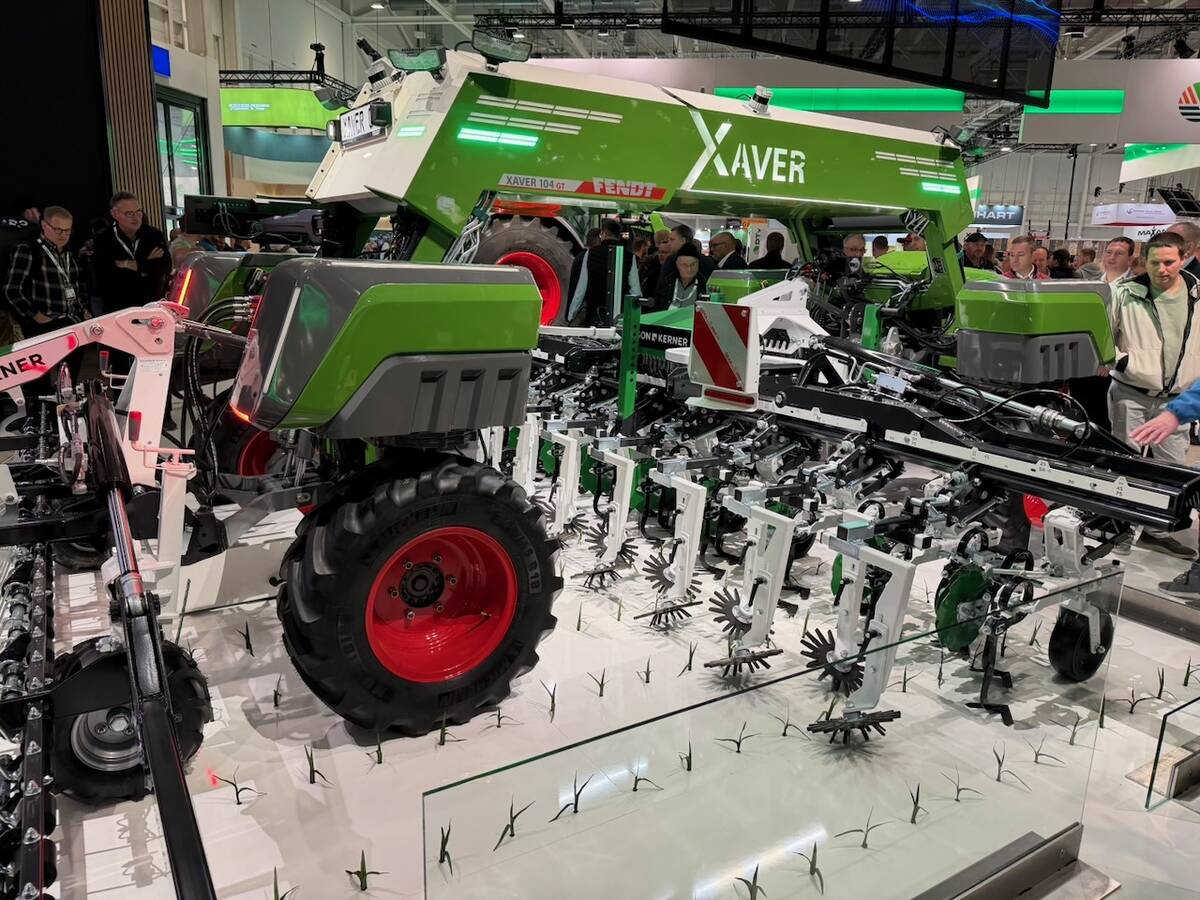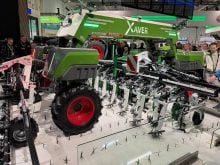STRATFORD, Ont. — Dairy farmers visiting the ADF booth at the annual Canadian Dairy XPO April 7 quickly recognized advantages of a new technology from the United Kingdom.
“It’s really interesting. It’s new technology. I’ve never seen it before,” said Ben Vos, who milks cows in Prince Edward Island.
“It makes a lot of sense. It dips the teats exactly when it should.”
ADF Milking Ltd. founder James Duke said his system has 40,000 customers in 24 countries, but it’s new to North America.
Read Also

VIDEO: Agritechnica Day 4: Robots and more robots, Nexat loves Canada and the trouble with tariffs
Agritechnica Day 4: Robots and more robots, Nexat loves Canada and the trouble with tariffs.
He suspects the handful or Canadian farmers with ADF milking clusters likely bought them based on online reviews. Duke is now establishing a cross-Canada dealership network headed by Michael Armstrong.
The system works in the same manner as conventional clusters until the critical point when they’re removed. That’s when the ADF technology kicks in to automatically apply the dip.
“In dipping the teats immediately, you deny bacteria access to the teat canal,” Duke said.
“You get the maximum benefit from the dip. It’s obvious to anyone who milks cows.”
As well, the automatic system kicks in when the teats are fully extended, which Duke said allows for better penetration for the skin-conditioning component in dips.
“This gives you consistency and it happens at the right time — right after milking.”
A 15-second, automatic, flush-and-sanitation cycle kicks in after the milking cluster is removed to ready the cups for the next cow to be milked.
Other milking systems require hand-dipping, which is a surprisingly labour intensive aspect of milking operations. It takes 500 man hours a year to dip teats in a 200-cow operation, he added.
“Our customers vary from 60 cows to the owners of an 11,000-cow operation in New Zealand.”
He said the system eliminates dip waste and should reduce the incidence of mastitis because the dip consistently applied at precisely the right time.
Duke said mastitis costs dairy farmers about $450 every time a cow is infected.
The ADF system has for four components:
- the cluster
- a stall box controller that manages dip, sanitized water and compressed, filtered air
- a central processor that manages the dipping and flushing functions
- a stainless steel unit that supplies the dip, water and air outside the parlour
Dealerships have been established in British Columbia, Alberta, Saskatchewan, Manitoba and Ontario. The head office is in Vancouver, and Duke said he’s speaking with an interested party in Quebec.
ADF literature says the system can be installed on any make or type of milking parlour, but Duke said at this point it may be best suited to conventional, non-robotic systems.
Duke has an engineering background and considerable experience in the dairy industry, including past ownership of two dealerships.
“The biggest challenge was coming up with a simple solution to an obvious need,” he said.
“We wanted reliability.”
Duke installed his first system in 2004, and ADF became a commercial venture the following year.
The Canadian Dairy XPO in Stratford attracts 15,000 visitors a year. It’s located in the heart of one of the most concentrated dairying regions in Canada.
Several companies exhibited robotic milking systems, including Lely, the industry leader, and BouMatic, which according to technical dealer manager Peter Elder is a newcomer to robotic milking systems.
“With the new barns going up, a good percentage are going to robotics,” Elder said.
BouMatic has designed the first system to milk cows through the back legs, which the company said has advantages in cow movement and welfare and protects the milking unit.
The system also uses the milk cups for pre-milking stimulation rather than a separate unit.
Stephen Fried of Lely said his company installed the world’s first robotic milking system in Holland 22 years ago, and the technology arrived in Canada 14 years ago.
“One of the most important considerations with robotics is what drives the cow to the milking. When producers move to robotics, they switch from a total mixed ration to a partial mixed ration,” Fried said.
“If you talk to the feed mills, they all make a robot ration these days.”
The robot ration is a bit of a treat for cows. It also allows producers to better manage feed intake according to the production capacity of individual animals, Fried said.














